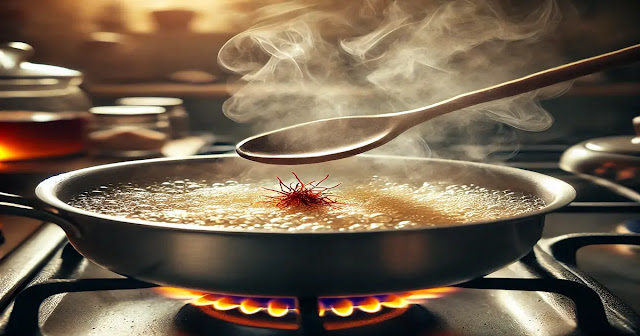Gulab Jamun the melt-in-your-mouth Indian sweet, gets a unique twist in this Curd Gulab Jamun recipe! Instead of using traditional khoya or milk powder, we use curd (yogurt) to create soft, spongy dumplings soaked in aromatic sugar syrup. If you love classic sweets but want to try something different, this is the perfect recipe for you!
Why You’ll Love This Recipe
✔️ Unique & Delicious – A tangy twist on a classic dessert.
✔️ Soft & Spongy Texture – Thanks to the magic of curd!
✔️ Easy to Make – No need for khoya or complicated ingredients.
✔️ Perfect for Festive Occasions – A treat everyone will love!
Ingredients You'll Need
For the Jamun Balls:
- 1 cup fresh curd (yogurt) – Thick and full-fat for best results
- ½ cup all-purpose flour (maida)
- 2 tbsp milk powder (optional, for extra richness)
- ½ tsp baking soda
- 1 tbsp ghee (clarified butter)
- A pinch of salt
- Oil or ghee for frying
For the Sugar Syrup:
- 1 ½ cups sugar
- 1 ½ cups water
- 4-5 cardamom pods, crushed
- 1 tsp rose water (optional, for fragrance)
- A few saffron strands (optional)
Step-By-Step Process
Step 1: Prepare the Dough
- In a mixing bowl, whisk the curd until smooth.
- Add all-purpose flour, milk powder, baking soda, salt, and ghee.
- Gently mix everything to form a soft, sticky dough. Avoid overmixing.
- Let the dough rest for 10-15 minutes.
Step 2: Make the Sugar Syrup
- In a saucepan, mix sugar and water.
- Bring it to a boil, stirring occasionally until the sugar dissolves.
- Add crushed cardamom, rose water, and saffron.
- Simmer for 5 minutes until slightly sticky (but not too thick). Keep warm.
Step 3: Shape and Fry the Jamuns
- Grease your hands with ghee and roll small portions of the dough into smooth balls.
- Heat oil or ghee in a deep pan on low-medium heat.
- Fry the balls until golden brown, stirring gently for even cooking.
- Remove and drain excess oil on a paper towel.
Step 4: Soak in Syrup
- Immediately add the fried jamuns to the warm sugar syrup.
- Let them soak for at least 1-2 hours so they absorb the flavors and become soft.
- Garnish with chopped nuts and serve warm.
Pro Tips for the Perfect Curd Gulab Jamun
✔ Use thick curd – Avoid watery curd to prevent a sticky dough.
✔ Don’t over-knead – A gentle mix is enough; overmixing makes them dense.
✔ Fry on low-medium heat – This ensures even cooking without burning.
✔ Let them soak well – The longer they sit in the syrup, the softer they get!
Serving Suggestions
🍯 Warm and fresh – Perfect for festivals or celebrations.
🍦 With vanilla ice cream – A heavenly combo of hot and cold.
🍵 Alongside masala chai – A delightful tea-time treat!
Health Benefits of Curd Gulab Jamun
Believe it or not, this dessert has some benefits too!
✔ Curd aids digestion – Probiotics keep your gut happy.
✔ Less fat than khoya versions – A lighter alternative to traditional recipes.
✔ Homemade and preservative-free – No artificial ingredients, just pure goodness.
Final Thoughts
Curd Gulab Jamun is a simple yet delightful way to enjoy a traditional dessert with a unique twist. Whether you’re making it for a festival, celebration, or just to satisfy your sweet cravings, this recipe is sure to impress!
So why wait? Try this out and let the rich, syrupy goodness melt in your mouth! 🍯✨
(FAQ's)
1. Can I use flavored yogurt?
It’s best to use plain, full-fat yogurt for the right texture. Flavored yogurt may alter the taste.
2. My dough is too sticky. What should I do?
Add a little more flour and let it rest for a few extra minutes.
3. Can I bake instead of frying?
Yes! Bake at 180°C (350°F) for about 15-20 minutes until golden, then soak in syrup.
4. How long can I store these Gulab Jamuns?
They stay fresh in the fridge for up to 5 days. Warm slightly before serving.
5. Can I use whole wheat flour instead of all-purpose flour?
Yes, but it will slightly change the texture. The jamuns may be denser.
.png)




.jpg)





.jpg)


.png)
